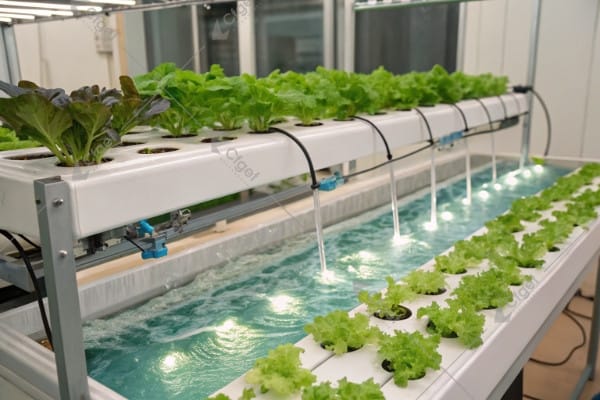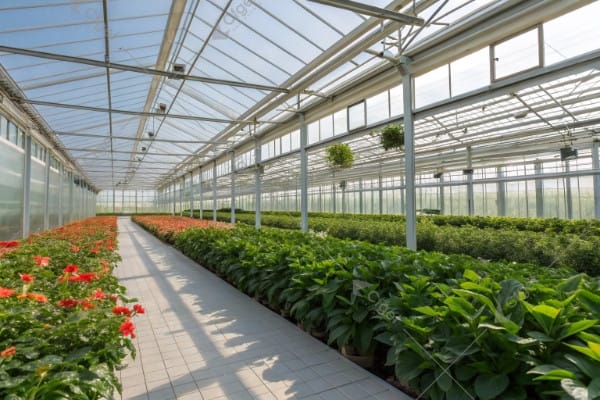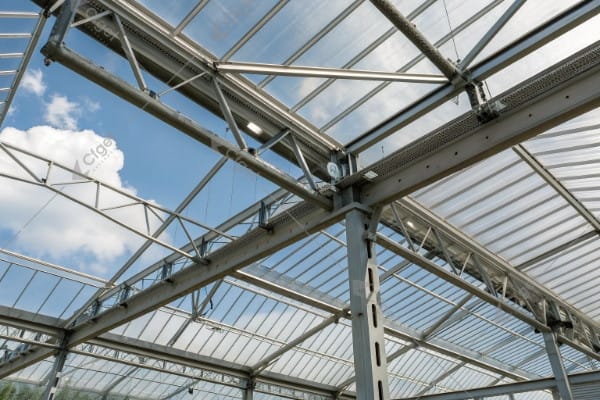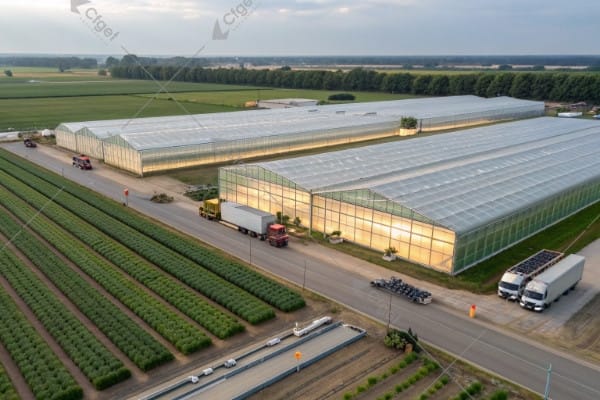Growing cannabis in greenhouses presents unique challenges that can turn into costly failures. Temperature fluctuations, improper lighting, and structural weaknesses can devastate your crop and investment overnight.
The perfect cannabis greenhouse requires precise climate control systems, effective light deprivation techniques, appropriate covering materials, and robust security measures. By integrating these elements with automated systems, commercial growers can maximize yields while ensuring consistent quality throughout all growing cycles.

After 28 years in the greenhouse industry, I’ve watched the cannabis cultivation sector evolve dramatically. The requirements for these specialized growing environments have become increasingly sophisticated as the market matures. Let me share what we’ve learned at CFGET about designing effective cannabis cultivation spaces.
You might like:——Designing the Optimal Marijuana Greenhouse: Key Technical Specifications & Considerations?
You might like:——Commercial Cannabis Greenhouses: The Ultimate Guide to Design, Setup & Optimization
What is the Optimal Climate Control System for a Commercial Cannabis Greenhouse?
Cannabis plants are extremely sensitive to environmental conditions. Too much humidity leads to mold and mildew, while temperature swings can stress plants and reduce potency. Finding the right climate control solution is not optional—it’s essential.
The optimal climate control system for commercial cannabis incorporates integrated HVAC, dehumidification, and CO2 enrichment with automated monitoring. Temperature should maintain 70-85°F (21-29°C) during day and 60-70°F (15-21°C) at night, with relative humidity between 40-70% depending on growth stage.
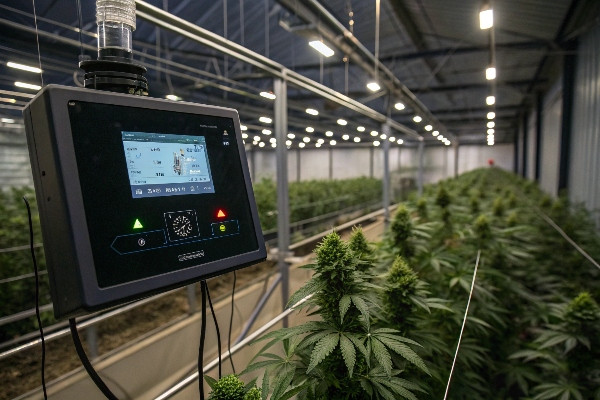
In my years working with cannabis greenhouses across different climates, I’ve found that a multi-layered approach to climate control yields the best results. The foundation of any effective system starts with proper air circulation. High-volume, low-speed fans strategically placed throughout the greenhouse create gentle, continuous airflow that prevents microclimates and helps maintain consistent temperature and humidity levels. For larger operations, we typically install both horizontal air flow fans and vertical circulation fans to ensure complete air movement around all plants.
Temperature management requires both heating and cooling capabilities. In colder regions, we implement radiant floor heating systems that provide even warmth from below, promoting healthy root development. This is often supplemented with forced air heaters for rapid temperature adjustment during cold snaps. For cooling, a combination of shade systems, evaporative cooling, and in some cases, mechanical cooling is necessary. I remember installing a system in Thailand where the ambient humidity made traditional evaporative cooling ineffective, requiring us to design a custom mechanical cooling solution that reduced both temperature and humidity simultaneously.
Humidity control deserves special attention in cannabis cultivation. During vegetative growth, plants benefit from higher humidity (60-70%), but flowering stages require drier conditions (40-50%) to prevent bud rot. Commercial-grade dehumidifiers with drain-to-waste systems are essential, and we often pair these with precision irrigation controls to minimize excess moisture introduction. In larger facilities, we implement zone-based humidity control that allows different sections of the greenhouse to maintain different moisture levels based on the crops’ growth stage.
CO₂ enrichment is another critical component that dramatically impacts yields. Natural gas CO₂ generators or liquid CO₂ systems can maintain levels between 1,000-1,500 ppm during daylight hours when plants are actively photosynthesizing. These systems must include safety monitors and automatic shutoffs to prevent dangerous CO₂ buildups and should be integrated with your ventilation systems to avoid wasting CO₂ when vents are open.
How to Implement Effective Light Deprivation ("Light Dep") in Cannabis Greenhouses?
Cannabis flowering is triggered by specific light cycles. Without proper light deprivation systems, your plants won’t flower on schedule, destroying your production timeline and reducing your annual harvests. This impacts both yield and profitability.
Effective light deprivation requires automated blackout systems with overlapping fabric to prevent light leaks, motorized deployment, and scheduled operation. The system should achieve complete darkness (less than 0.1 footcandles) for 12 hours to trigger and maintain flowering, while allowing full light exposure during growing periods.

I’ve implemented dozens of light deprivation systems over the years, and the difference between an adequate system and an excellent one comes down to the details. Light deprivation (or "light dep") is fundamentally about creating artificial night conditions to trick cannabis plants into flowering regardless of the natural season. This allows for multiple harvests per year rather than just one seasonal crop.
The most effective light deprivation systems use commercial-grade blackout fabric with specialized properties. We typically recommend materials with at least three layers: a white reflective top layer that bounces light back into the greenhouse during day use, a middle light-blocking layer made of black polyethylene or similar material, and a bottom heat-reflective layer that helps maintain temperature control during blackout periods. The fabric should have a minimum 99.9% light blockage rating to prevent light leaks that could disrupt the flowering cycle.
Installation details matter tremendously. We design systems with generous overlap at all seams (at least 3 feet), and use specialized light traps at all entry points. In one facility in California, we implemented an innovative double-door system with separate light locks to allow staff to enter and exit during blackout periods without compromising the darkness. The motor systems that drive these curtains must be dependable and quiet, as even small failures can disrupt an entire crop cycle. We typically install redundant motors with battery backups to ensure system reliability.
Timing controls for light deprivation need to be precise and programmable. Modern systems allow for gradual deployment and retraction to reduce plant stress by mimicking dawn and dusk. These controllers should integrate with your environmental control systems to adjust ventilation, temperature, and humidity during blackout periods when natural ventilation may be limited. In facilities with supplemental lighting, the controller must coordinate between natural light, artificial light, and blackout periods to maintain precise day/night cycles regardless of seasonal changes in daylight hours.
One often overlooked aspect of light deprivation is the heat buildup that can occur when blackout curtains are deployed. We address this by designing specialized ventilation solutions that can operate during blackout periods without introducing light leaks. This might include light-trapped ridge vents, sealed ventilation systems, or specialized cooling systems that can maintain temperature even when the greenhouse is completely sealed.
Choosing the Right Greenhouse Covering Material (Glass, Polycarbonate, Film) for Cannabis?
The wrong covering material can cause light diffusion problems, heat retention issues, and rapid deterioration in harsh environments. Each material has specific benefits and drawbacks that directly impact your cannabis quality and operational costs.
For cannabis greenhouses, covering material selection depends on climate, budget, and growing strategy. Glass offers durability and maximum light transmission (90-95%) but has higher costs and heat loss. Polycarbonate provides better insulation (R-value 1.5-2.0) and diffused light, while greenhouse films offer affordability and customized light transmission properties (80-92%).
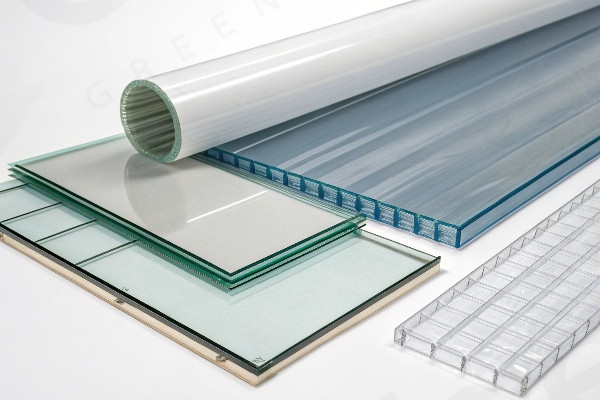
Selecting the appropriate covering material1 for a cannabis greenhouse requires balancing multiple factors including light transmission, insulation properties, durability, and budget constraints. Over my decades in the greenhouse industry, I’ve helped clients navigate these choices across various climates and growing objectives.
Glass has traditionally been considered the premium greenhouse covering option. Modern horticultural glass offers excellent clarity with transmission rates of 90-95% of PAR (Photosynthetically Active Radiation). Specialized low-iron glass can push this even higher. The durability of glass is unmatched, often lasting 30+ years with minimal maintenance, making it cost-effective over the long term despite higher initial investment. For cannabis operations in regions with heavy snow loads or hail, tempered glass provides necessary strength. One cannabis operation I worked with in Colorado chose double-paned, tempered glass specifically for its durability against extreme weather and its superior insulation properties, which reduced their heating costs by approximately 40% compared to their previous single-layer covering.
Polycarbonate panels have become increasingly popular for cannabis greenhouse2s. Available in twin-wall, triple-wall, or even five-wall configurations, these panels provide excellent insulation with R-values ranging from 1.5 to 4.0 depending on the structure. The diffused light created by polycarbonate is particularly beneficial for cannabis, creating more uniform canopy lighting and reducing "hot spots" that can stress plants. Most quality polycarbonate includes UV protection layers that prevent yellowing and degradation. For cannabis facilities in areas with extreme temperature fluctuations, polycarbonate’s insulation properties can significantly reduce heating and cooling costs. A client in Michigan switched from single-layer film to 8mm twin-wall polycarbonate and reported approximately 30% energy savings while experiencing more consistent plant growth.
Greenhouse films offer the most affordable option with surprising sophistication. Modern polyethylene films are available with various specialized properties: diffusion films that scatter light evenly throughout the plant canopy, anti-condensation films that prevent water droplets from forming and potentially causing disease issues, and thermal films that retain heat at night. The typical lifespan ranges from 4-6 years for quality greenhouse films, requiring more frequent replacement than rigid materials. However, this also presents opportunities to adapt covering properties as growing strategies evolve. Films can be particularly advantageous for light deprivation greenhouses since they can be combined with blackout systems more easily than rigid coverings. For large-scale operations looking to minimize startup costs while maintaining quality growing conditions, films often provide the best initial return on investment.
Regional climate considerations significantly impact covering selection. In hot southern regions, coverings with heat-reduction properties or the ability to apply external shade systems become essential. Conversely, in northern climates, higher insulation values are critical for managing heating costs during colder months. For cannabis facilities in humid environments, coverings that minimize condensation (such as films with anti-drip properties or sloped rigid panels) help reduce disease pressure.
Structural Integrity and Security Considerations for Cannabis Greenhouse Facilities?
Security breaches and structural failures can destroy a cannabis business overnight. From theft and vandalism to collapse under snow load or wind damage, inadequate structural design creates vulnerability that puts your entire operation at risk.
Cannabis greenhouse structures require engineered steel framing to support equipment loads, security features, and withstand local weather conditions. Key requirements include wind resistance (minimum 85 mph), snow load capacity (relevant to region), foundation anchoring, and integrated security systems with controlled access points and perimeter monitoring.
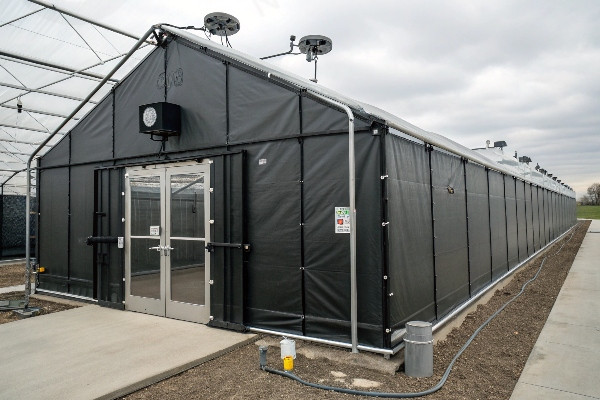
When designing cannabis greenhouse structures, the stakes are particularly high compared to conventional agricultural applications. Cannabis facilities must balance the growing environment with significant security requirements while maintaining structural integrity3 under various equipment loads and environmental pressures. Having designed greenhouses in over 20 countries, I’ve developed specific approaches to address these unique challenges.
The greenhouse frame design begins with load calculations that account for standard environmental factors plus cannabis-specific considerations. Beyond typical snow, wind, and seismic loads, cannabis greenhouses must support substantial additional weight from blackout systems, supplemental lighting (which can add 15-20 lbs per fixture), trellis systems, and security equipment. We typically design with galvanized steel frames that provide superior strength-to-weight ratios compared to aluminum or wood structures. For a recent cannabis project in Washington state, we specified structural steel capable of supporting 15 pounds per square foot of hanging weight beyond standard environmental loads, which proved essential when the grower later expanded their lighting system.
Foundation systems for cannabis greenhouses require special attention. While traditional greenhouse crops might use simple ground posts or poured concrete pier foundations, cannabis facilities generally benefit from continuous perimeter foundations. These provide enhanced security (preventing under-wall access) and superior anchoring for the structural loads involved. In frost-prone regions, foundations must extend below the frost line, sometimes requiring footings 48" or deeper. For a project in Canada, we designed a specialized insulated frost-protected shallow foundation system that maintained sufficient warmth around the perimeter to prevent frost heave while minimizing excavation depth.
Security integration with the greenhouse structure represents a critical design aspect. Physical security begins with controlled entry points—typically limited to one or two locations with man-traps or security vestibules. The greenhouse perimeter should incorporate tamper-resistant connections, security glazing clips for rigid coverings, and buried film edges for flexible coverings. Mounting points for security cameras, motion sensors, and lighting must be incorporated during the design phase rather than added as afterthoughts. One innovative approach we’ve implemented involves integrating security sensors within the greenhouse structure itself, using the frame as conduit for wiring while providing protection from tampering.
Ventilation and cooling systems present particular challenges for security. Traditional roof vents or open-side ventilation create potential security vulnerabilities. For high-security applications, we design sealed greenhouse systems with mechanical cooling and filtered air intake systems. Where natural ventilation is preferred for operational cost savings, we implement security-screened vent systems with monitored alarms. The insect exclusion requirements for cannabis often align well with security needs, allowing dual-purpose screening systems that address both concerns.
The specialized nature of cannabis facilities often requires customized structural solutions. For example, compartmentalization between growing areas—separating vegetative, flowering, and processing spaces—requires internal wall systems that provide both environmental separation and security controls. These interior structures must integrate with the overall greenhouse design while maintaining climate control efficiency. For larger operations, we often implement corridor systems that allow movement between zones without cross-contamination or climate disruption, with each transition point incorporating appropriate security controls.
Conclusion
Designing an effective cannabis greenhouse means integrating precise climate control, light deprivation systems, appropriate covering materials, and robust structural security. By addressing these core elements with professional engineering, you’ll create a cultivation environment that maximizes yields, quality, and operational efficiency.
This link will provide insights into various covering materials, helping you choose the best option for your greenhouse needs. ↩
Explore this resource to learn about optimal design strategies for cannabis greenhouses, ensuring maximum yield and quality. ↩
Discover essential tips for maintaining structural integrity in cannabis greenhouses, crucial for security and operational success. ↩

